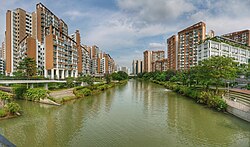
A studio apartment, or studio condo also known as a studio flat (UK), self-contained apartment (Nigeria), efficiency apartment, bed-sitter (Kenya), or bachelor apartment, is a small dwelling in which the normal functions of a number of rooms – often the living room, bedroom, and kitchen – are combined into a single room.

The Housing & Development Board, is a statutory board under the Ministry of National Development responsible for the public housing in Singapore. Established in 1960 as a result of efforts in the late 1950s to set up an authority to take over the Singapore Improvement Trust's (SIT) public housing responsibilities, the HDB focused on the construction of emergency housing and the resettlement of kampong residents into public housing in the first few years of its existence.

Bishan, also known as Peck San, Bishan New Town or Bishan Town, is a planning area and matured residential town located at the northernmost portion of the Central Region of Singapore. Statistically, the area is ranked the 38th biggest in terms of geographical size and the 22nd most populated planning area in the country. It is located at the most Central point of Singapore, and it comprises Upper Thomson, Marymount, Shunfu, Sin Ming, Bishan North and Bishan East. There are also many private residential properties in Bishan. Bishan is ranked 15th in terms of population density. Apart from its boundary with the Central Water Catchment in the west, Bishan borders three other planning areas: Ang Mo Kio to the north, Toa Payoh to the south, and Serangoon to the east.

State housing is a system of public housing in New Zealand, offering low-cost rental housing to residents on low to moderate incomes. Some 69,000 state houses are managed by Kāinga Ora – Homes and Communities, most of which are owned by the Crown. In excess of 31,000 former state houses exist, which are now privately owned after large-scale sell-offs during recent decades. Since 2014, state housing has been part of a wider social housing system, which also includes privately owned low-cost housing.

Housing in Japan includes modern and traditional styles. Two patterns of residences are predominant in contemporary Japan: the single-family detached house and the multiple-unit building, either owned by an individual or corporation and rented as apartments to tenants, or owned by occupants. Additional kinds of housing, especially for unmarried people, include boarding houses, dormitories, and barracks.

Sengkang is a planning area and residential town located in the North-East Region of Singapore. The town is the second most populous in the region, being home to 249,370 residents in 2020. Sengkang shares boundaries with Seletar and Punggol in the north, Pasir Ris and Paya Lebar in the east, Hougang and Serangoon to the south, as well as Yishun and Ang Mo Kio to the west.

Lift Upgrading Programme (LUP) is a Singapore Housing and Development Board (HDB) project which upgrades and improves the facilities of the lifts at HDB flats. This project is for housing blocks built before the year 1996, which were built with lifts that only serve some floors to meet privacy demands and to cut costs. A poll with a 75% majority in favor is needed for the upgrading to begin. The non-citizen residents who stay in the same HDB block have no polling rights.

The Wimpey No-fines House was a construction method and series of house designs produced by the George Wimpey company and intended for mass-production of social housing for families, developed under the Ministry of Works post-World War II Emergency Factory Made programme. "No-fines" refers to the type of concrete used – concrete with no fine aggregates.
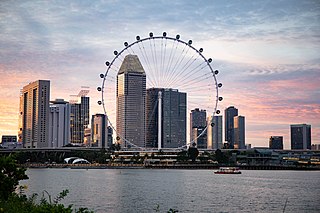
This article shows the notable future developments in Singapore. Most of them are currently under construction with most to be completed within the next five years.
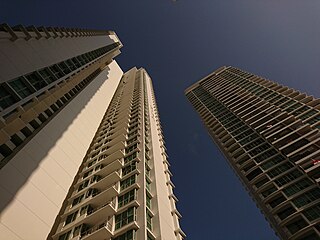
Design, Build and Sell Scheme was introduced by the Housing and Development Board in 2005. Flats built under the scheme were meant for public housing and developed by private developers. They were built with supposedly better designs and mostly in matured estates such as Tampines, Ang Mo Kio and Bishan. There were 13 DBSS projects, totaling 8,533 units. The scheme attracted public outrage when a series of five-room DBSS flats developed in Tampines by Sim Lian Group Limited opened for sale at S$880,000, way higher than what could be afforded by most middle-class families. As HDB did not control the pricing of DBSS units being sold, the scheme was poorly received and subsequently suspended indefinitely.
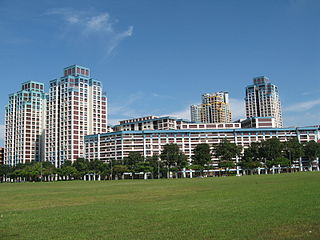
Public housing in Singapore is subsidised, built, and managed by the government of Singapore. Starting in the 1930s, the country's first public housing was built by the Singapore Improvement Trust (SIT) in a similar fashion to contemporaneous British public housing projects, and housing for the resettlement of squatters was built from the late 1950s. In the 1960s under the SIT's successor, the Housing and Development Board (HDB), public housing consisting of small units with basic amenities was constructed as quickly and cheaply as possible at high densities and used for resettlement schemes. From the late 1960s, housing programmes focused more on quality, public housing was built in new towns, and a scheme allowing residents to lease their flats was introduced. Throughout the 1970s and 1980s, more public housing options were provided for the middle class and efforts to increase community cohesion within housing estates were made. From the 1990s, the government began portraying public housing as an asset, introducing large-scale upgrading schemes and loosening regulations on the resale of public housing while additional housing programmes for the sandwich classes and elderly residents were introduced. Rising housing prices led to public housing being seen as an investment from the 2000s, and new technologies and eco-friendly features were incorporated into housing estates.

The Home Improvement Programme (HIP) (Chinese: 家居改进计划; pinyin: jiā jū gǎi jìn jì huá; Malay: Program Peningkatan Rumah) was introduced by the Housing Development Board (HDB) in August 2007, during Singapore's National Day Rally. It replaced the earlier Main Upgrading Programme (MUP), which operated from 1990 to 2007. The HIP focuses on addressing common maintenance issues that arise in ageing HDB flats, such as spalling concrete, ceiling leaks, and outdated infrastructure. It offers essential and optional upgrades tailored to flats, where essential improvements are fully subsidised by the government, while optional improvements require co-payment from residents.

The new towns of Singapore are planned communities located across Singapore that are designed to be self contained. Designed to house up to 300,000 residents, these new towns contain areas zoned for housing, recreation and employment, and are composed of multiple neighbourhoods, each of which is further subdivided into multiple precincts. Amenities in these new towns are provided through a multi-tiered system, and based on Housing and Development Board (HDB) guidelines. As of 2022, the country has 24 new towns.
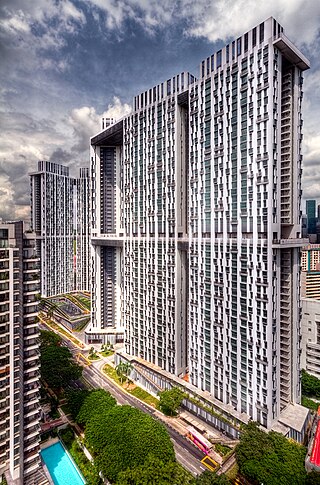
The Pinnacle@Duxton is a 50-storey residential development in Singapore's city center, next to the business district. All seven connected towers are collectively the world's tallest public residential buildings, and featuring the two longest sky gardens ever built on skyscrapers, at 500m each.
Treelodge@Punggol is a HDB estate located in Punggol, Singapore, located at Punggol Road, Punggol Drive and Punggol Place. It is Singapore's first experimental eco-friendly public-housing project and was awarded the Green Mark Platinum Award. The project also won international awards such as the Green Good Design Award in 2010 and the Futurac Green Leadership award in 2011 for its sustainable design.
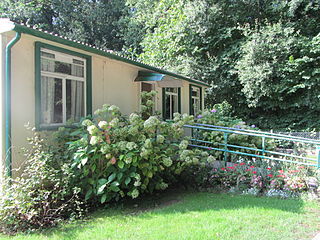
Prefabs were a major part of the delivery plan to address the United Kingdom's post–World War II housing shortage. They were envisaged by war-time prime minister Winston Churchill in March 1944, and legally outlined in the Housing Act 1944.
Brickworks is a subzone of Bukit Batok, Singapore. It is bounded by Bukit Batok West Avenue 3/2/5 and Bukit Batok Road and is beside the upcoming New Town, Tengah. It is the latest development area in Bukit Batok.

Kinkabool is a heritage-listed apartment block at 32–34 Hanlan Street, Surfers Paradise, Queensland, Australia. It was designed by John M. Morton of Lund Hutton Newell Black & Paulsen and built from 1959 to 1960 by J D Booker Constructions Pty Ltd. It was added to the Queensland Heritage Register on 5 February 2009.
Julius Street Flats is a heritage-listed group of seven apartment blocks at 15 Julius Street, New Farm, City of Brisbane, Queensland, Australia. They were built from 1934 to early 1950s. The apartment blocks are called Ardrossan, Green Gables, Julius Lodge, Syncarpia, Ainslie, Pine Lodge and Evelyn Court. They were added to the Queensland Heritage Register on 4 August 1997.

Bidadari is a housing estate and a subzone of Toa Payoh planning area, in the Central Region of Singapore.
